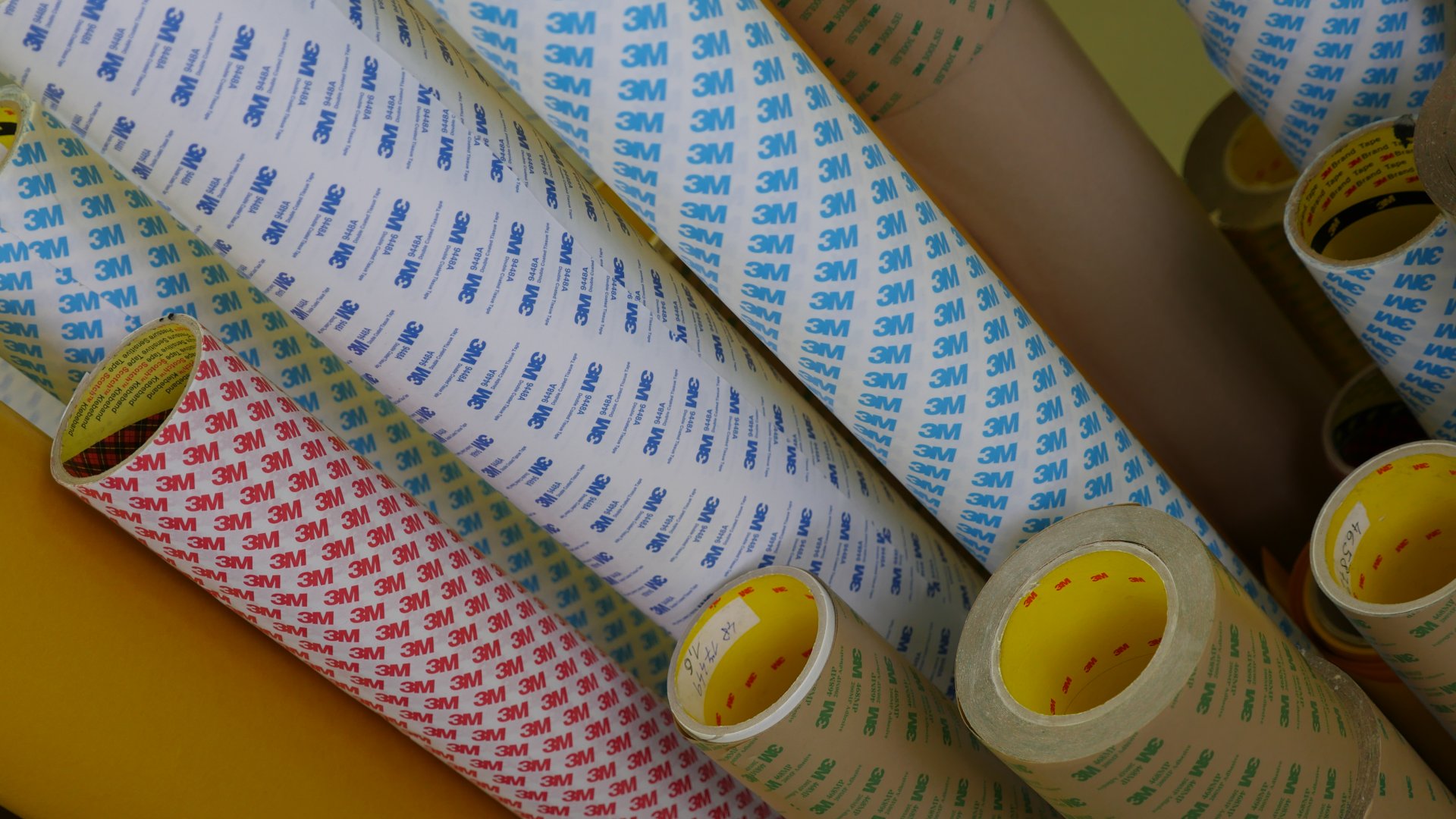Adhesive
An adhesive is a substance that allows the surfaces of solid objects to adhere to one another and thus be firmly joined. An adhesive can be made of natural mixtures or synthetic materials.
Rubber cement
It is characterized by a high initial adhesion to the bonded surface, but its final strength is lower as is its chemical resistance. It is also more sensitive to the outdoor environment, such as temperature and UV radiation.
Acrylic glue
It has a slightly lower initial adhesion than rubber cement, however, its final strength is significantly higher and increases over time. Acrylic adhesives are very resistant to external influences and chemicals. They are also more resistant to temperature than rubber cements.
Silicone glue
It is not as strong as rubber cement and acrylic glue, but it does have the highest temperature resistance. It also works well on low surface energy (LSE) materials that are poorly adhesive, especially silicone, which cannot be bonded by any other glue.
Surface energy
Surface energy or “wetting” determines whether the surface of a given material is very adhesive (high surface energy - HSE), moderately adhesive (medium surface energy - MSE) or poorly adhesive (low surface energy LSE), i.e. how well a surface is able to take up a glue.
Example of materials by surface energies:
- HSE - steel, aluminum, stainless steel, copper, zinc, glass, Kapton, nylon, polyester, polyurethane
- MSE - ABS, polycarbonate, PVC, Polystyrene, PVA
- LSE - Polyethylene, polypropylene, silicone, Teflon, powder coating
Finger-lift
An overlap of the cover film/paper (liner) on cut-outs from double-sided tapes, created by removing part of the adhesive layer. It is used to easily remove this layer during application.
Finger-lift can also be created by additionally gluing a cut-out from one-sided adhesive tape (sometimes the term Tabbing Tape is also used), which has one adhesive part and one non-adhesive part (cannot be applied to all types of liners)
Liner
A liner is a protective film or siliconized paper used to protect the adhesive on a tape. The liner can be on one side of double-sided tape, where it serves both to ensure that the tape in the roll does not stick to itself and can be unwound, and to keep the adhesive covered and protected even after being stuck on the first glued material. The liner is removed before applying the second material to be bonded.
A liner can also be on the adhesive side of single-sided adhesive tapes, where it makes it easier to handle individual cut offs of the tape and at the same time prevents the adhesive from sticking to the top side of the tape when it is wound in a roll. This is particularly used with silicone adhesive tapes.
Carrier
The carrier (or web or backing) is the solid part of a single-sided or double-sided adhesive tape which carries the adhesive. The carrier is most often foil, paper, nonwoven fabric, fibre mesh or foam. For single-sided adhesive tapes, the carrier is always the non-adhesive part of the tape. Double-sided adhesive tape with a carrier, even if it is not visible at first glance, can very easily be distinguished from that without a carrier (transfer) because the tape with a carrier cannot be stretched after removing the liner, while tapes without a carrier can be stretched like “chewing gum”.
Joint stress
The stress on a joint is caused by external influences on the joint. The stress on a joint can be, for example, mechanical force, temperature, weather and UV radiation, or the action of chemicals and other environmental influences.
Mechanical stress is further divided into 4 basic types, depending on the way in which this force acts on the joint:
Tensile - stress on the joint by the action of forces perpendicular to the bonded surface in a direction away from the bonded surface. Such stress can be, for example, the effect of gravity and the object’s mass on a product placed on a ceiling
Shear – stress on a joint in various directions parallel to the bonded surface. An example of such a stress is the action of gravity and mass on a product placed on a wall, which tends to slide/slip downwards.
Cleavage - stress on the joint at its edge perpendicular to the glued surfaces, which causes the individual glued materials to be pushed away from each other. This is easily imagined as splitting a log. This is a relatively demanding means of stress and it is necessary to properly design and size the bond.
Exfoliation - the most difficult method of stress for a glued joint; here a force acts on one material of the glued joint at its edge at an angle. A typical example of this from everyday life is the removal (peeling) of stickers or labels from various products after purchase.
It is necessary to very carefully design and sufficiently size the bond for this type of stress.

